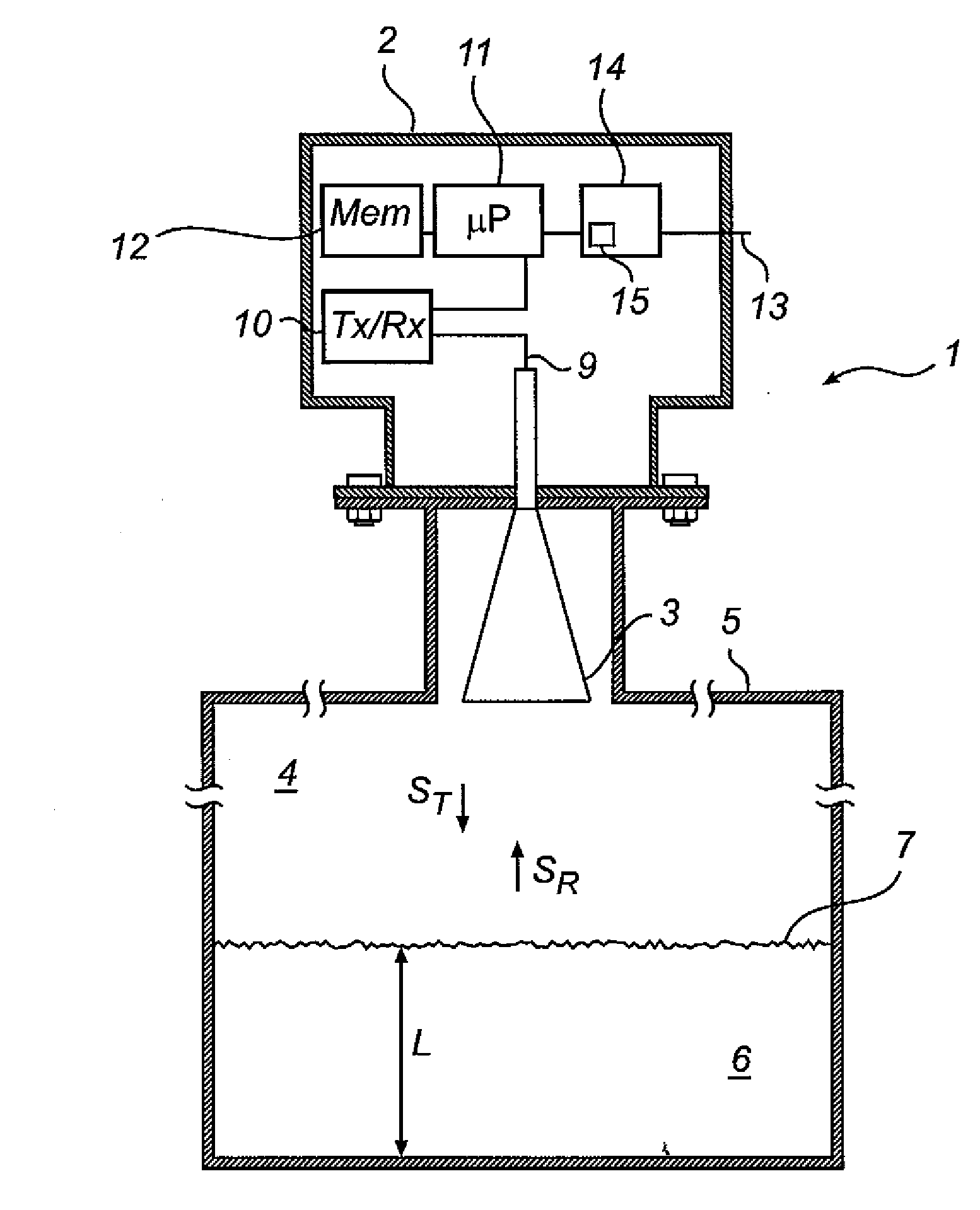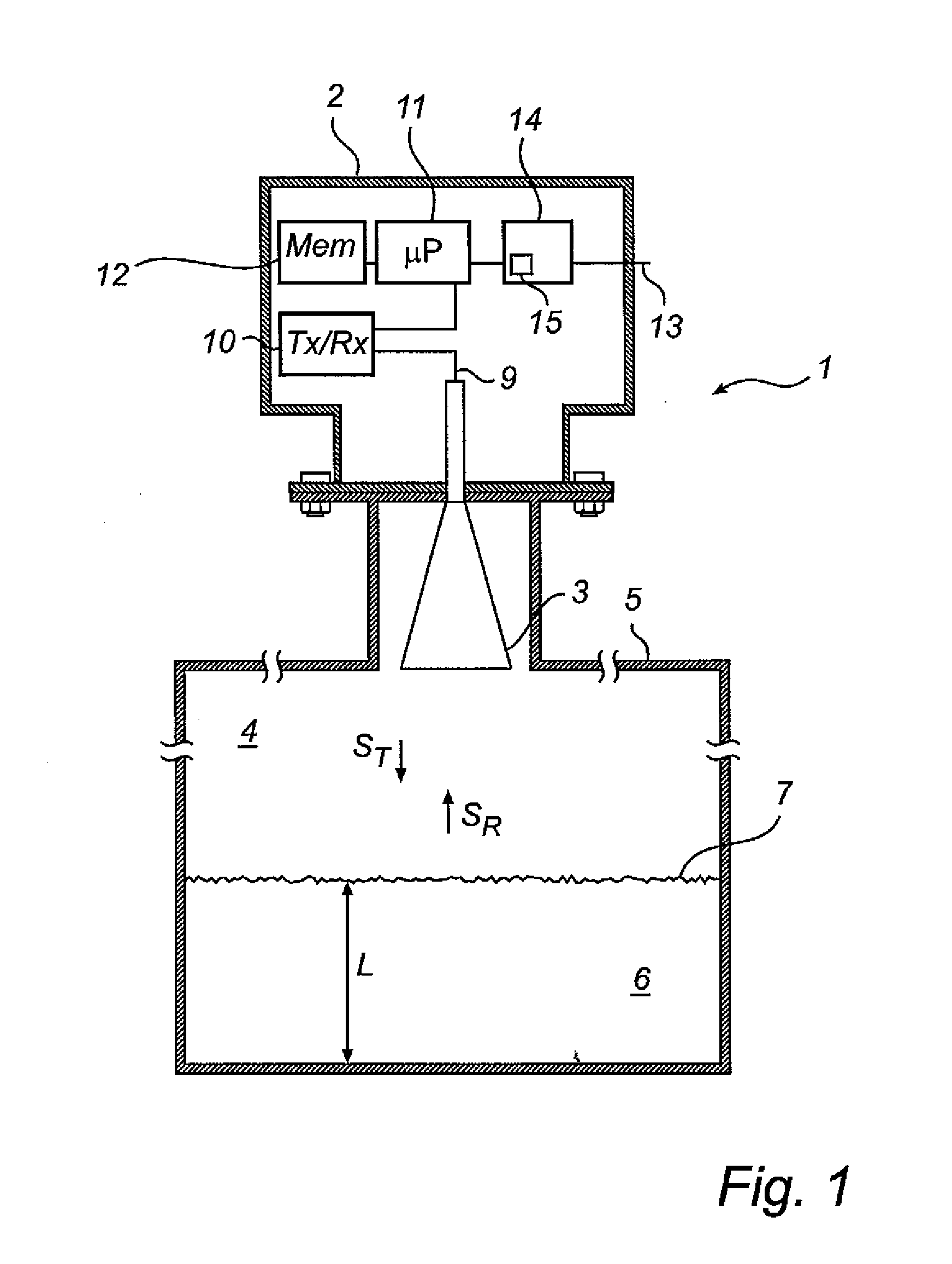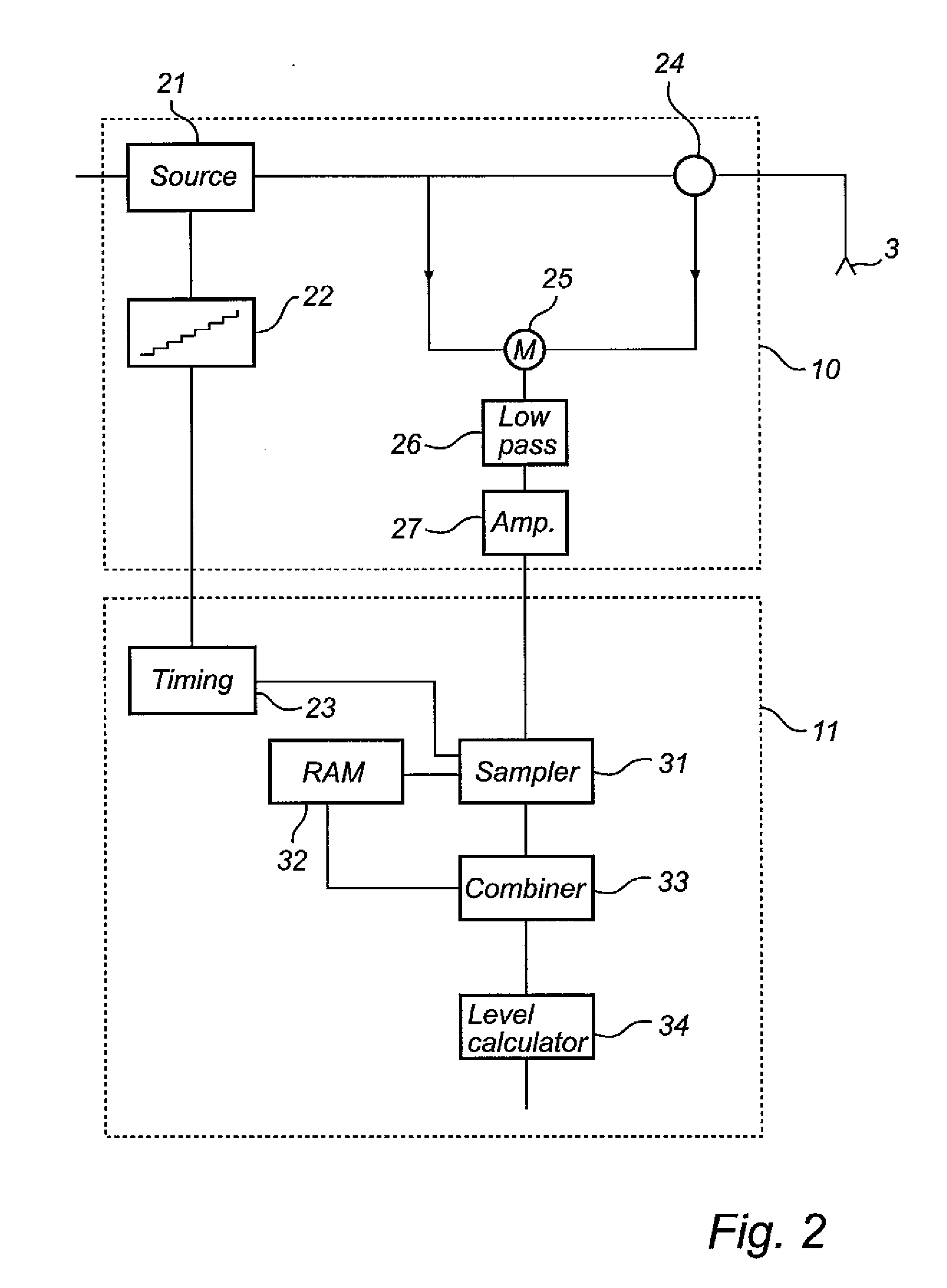Fmcw-type radar level gauge
a level gauge and radar technology, applied in the direction of using reradiation, liquid/fluent solid measurement, antennas, etc., can solve the problems of increasing sweep time, power storage capacity severely limited, and less suitable for applications where power is needed, so as to increase the bandwidth without increasing the sweep time
- Summary
- Abstract
- Description
- Claims
- Application Information
AI Technical Summary
Benefits of technology
Problems solved by technology
Method used
Image
Examples
Embodiment Construction
[0024]In the present description, embodiments of the present invention are mainly described with reference to a radar level gauge system having a free propagating antenna for radiating and capturing electromagnetic signals. It should be noted that this by no means limits the scope of the invention, which is equally applicable to other signal propagating devices, including other free propagating antennas such as a rod antenna, a patch antenna, a fixed or movable parabolic antenna or a conical antenna, and wave guides, such as a still pipe, a transmission line or a probe, such as a single-line probe (including a so-called Goubau probe), a twin-line probe or a coaxial probe.
[0025]Further, in the following description, embodiments of the present invention are mainly described with reference to an FMCW radar level gauge using a stepped frequency sweep. It is noted that the present invention is advantageous in any sampled FMCW system, also when the frequency sweep is continuous.
[0026]FIG....
PUM
 Login to View More
Login to View More Abstract
Description
Claims
Application Information
 Login to View More
Login to View More - R&D
- Intellectual Property
- Life Sciences
- Materials
- Tech Scout
- Unparalleled Data Quality
- Higher Quality Content
- 60% Fewer Hallucinations
Browse by: Latest US Patents, China's latest patents, Technical Efficacy Thesaurus, Application Domain, Technology Topic, Popular Technical Reports.
© 2025 PatSnap. All rights reserved.Legal|Privacy policy|Modern Slavery Act Transparency Statement|Sitemap|About US| Contact US: help@patsnap.com



